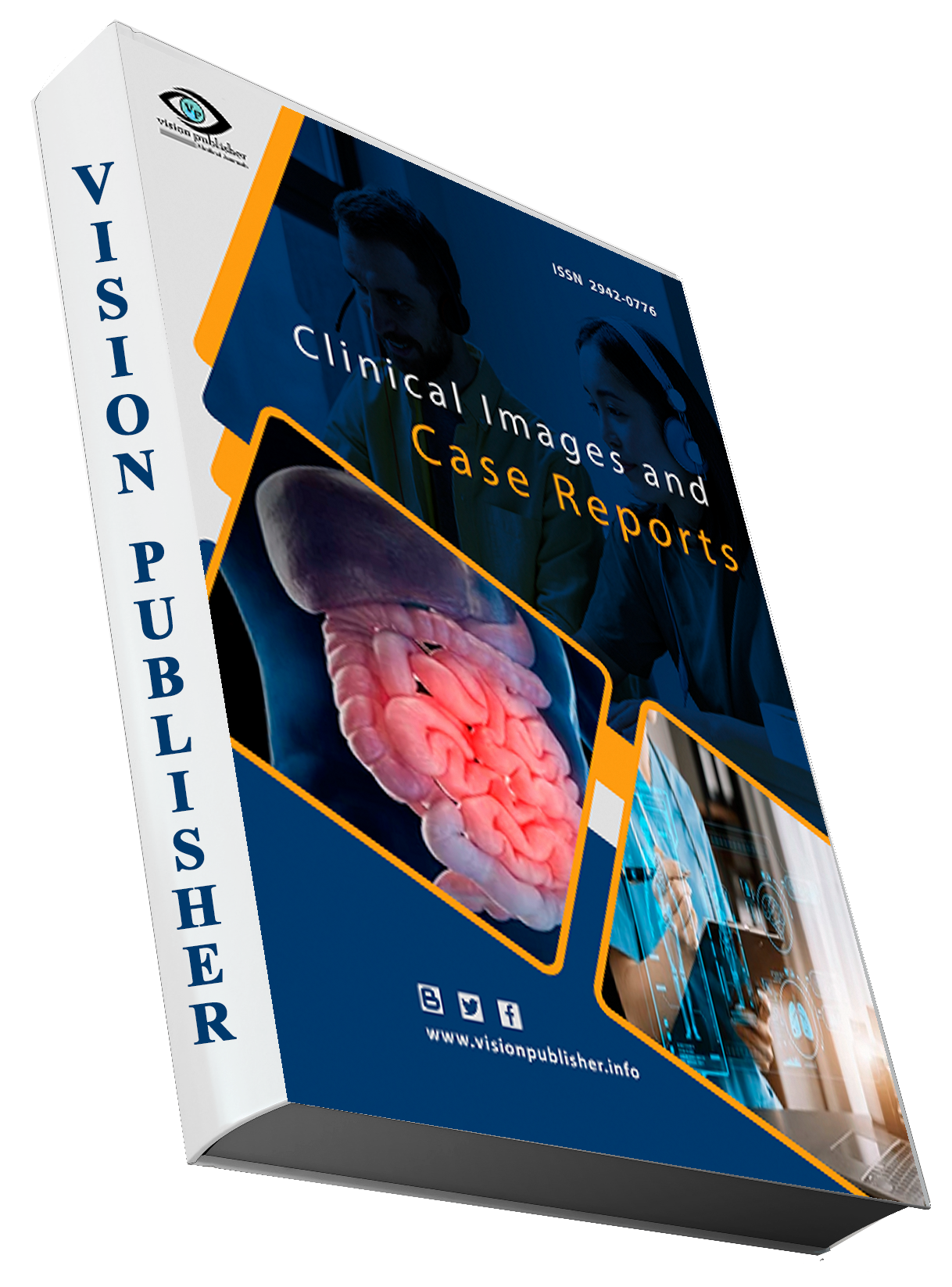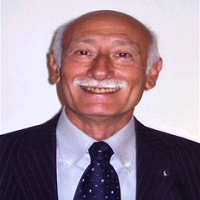Inductively Coupled Plasma Mass Spectrometry (ICP-MS) Instrumentation, Analysis, Strengths, Limitations, Biomedical and Pharmaceutical Applications
Keywords:
ICP-MS, Instrumentation, Analysis, Strengths, Limitations, Pharmaceutical ApplicationsAbstract
An argon gas plasma is delivered to an aerosol created by pumping a pre-prepared liquid containing the analyte through a nebulizer in the simplest type of ICP-MS. Plasma with temperatures ranging from around 5500 to 6500 K is hot enough to atomize and ionise nearly every element, even the ones with the strongest ionisation potentials. A mass spectrometer can be used to segregate the analyte ions into their mass to charge (m/z) ratio and detect them after guiding the ions into it using electrostatic ion optic components. For the most part, ionisation is very efficient, therefore the number of identified ions for a given element should be considered a good indicator of its concentration in the sample. Launched in 1983, the technique has progressed from a single-detector, quadrupole mass spectrometer-equipped instrument to modern time-of-flight (TOF) mass spectrometers that can measure the full mass spectrum simultaneously, as well as single-and double-focusing magnetic sector instruments that can measure isotope ratios with high precision thanks to single- or multicollector detection systems. Though advancements in pharmaceutical, biomedical, and life sciences are crucial, medical science as a whole is important for everyone. Additional research is being conducted in these areas to ascertain, with remarkable precision, the concentrations and amounts of organic molecules and inorganic elements to be utilised in pharmaceuticals, including nucleotides, peptides and proteins containing sulphur and phosphorus, and so on. An innovative and potent method for elemental and isotope analysis, inductively coupled plasma-mass spectrometry (ICP-MS) has been available since 1980. It allows for the simultaneous examination of the vast majority of the elements listed in the periodic table, as well as an extraordinarily broad spectrum of elements. It can also be used for mass-to-charge ratio measurements of isotope ratios and for qualitative, quantitative, and semiquantitative analysis. When it comes to biological and pharmaceutical inorganic impurity quantification, ICP-MS has lately become the gold standard.
Downloads
References
Meermann B, Nischwitz V. ICP-MS for the analysis at the nanoscale - a tutorial review. J Anal At Spectrom. 2018 Sep;33(9). doi: 10.1039/C8JA00037A
Bustos ARM. The role of ICP-MS in separation science. Chromatographia. 2020 Feb 17;83(2):145–7. doi: 10.1007/s10337-019-03846-2
Xu X, Wang H, Li H, Sun H. Metalloproteomic approaches for matching metals to proteins: The power of inductively coupled plasma mass spectrometry (ICP-MS). Chem Lett. 2020 Jun;49(6):697–704. D
Jackson BP, Liba A, Nelson J. Advantages of reaction cell ICP-MS on doubly charged interferences for arsenic and selenium analysis in foods. J Anal At Spectrom. 2015;30(5):1179–83.
Rodushkin I, Engström E, Stenberg A, Baxter DC. Determination of low-abundance elements at ultra-trace levels in urine and serum by inductively coupled plasma-sector field mass spectrometry. Anal Bioanal Chem. 2004;380:247–57.
Choe K-Y, Gajek R. Determination of trace elements in human urine by ICP-MS using sodium chloride as a matrix-matching component in calibration. Anal Methods. 2016;8:6754–63.
Case CP, Ellis L, Turner JC, Fairman B. Development of a routine method for the determination of trace metals in whole blood by magnetic sector inductively coupled plasma mass spectrometry with particular relevance to patients with total hip and knee arthroplasty. Clin Chem. 2001;47:275–80.
McShane WJ, Pappas RS, Wilson-McElprang V, Paschal D. A rugged and transferable method for determining blood cadmium, mercury, and lead with inductively coupled plasma-mass spectrometry. Spectrochim Acta Part B At Spectrosc. 2008;63:638–44.
Bocca B, Mattei D, Pino A, Alimonti A. Uncertainty evaluation in the analysis of biological samples by sector field inductively coupled plasma mass spectrometry. Part A: Measurements of Be, Cd, Hg, Ir, Pb, Pd, Pt, Rh, Sb, U, Tl and W in human serum. Rapid Commun Mass Spectrom. 2010;24:2363–9. [PubMed] [Google Scholar]
Pappas RS. Sample Preparation Problem Solving for Inductively Coupled Plasma-Mass Spectrometry with Liquid Introduction Systems I. Solubility, Chelation, and Memory Effects. Spectroscopy (Springf) 2012;27:20–31. #
Psychogios N, Hau DD, Peng J, Guo AC, Mandal R, Bouatra S, et al. The human serum metabolome. PLoS One. 2011;6:e16957. [PMC free article] [PubMed] [Google Scholar]
Gonnen R, Kol R, Laichter Y, Marcus P, Halicz L, Lorber A, et al. Determination of Uranium in Human Hair by Acid Digestion and FIAS-ICPMS. J Radioanal Nucl Chem. 2000;243:559–62. [Google Scholar]
Rodrigues JL, Nunes JA, Batista BL, de Souza SS, Barbosa F., Jr A fast method for the determination of 16 elements in hair samples by inductively coupled plasma mass spectrometry (ICP-MS) with tetramethylammonium hydroxide solubilization at room temperature. J Anal At Spectrom. 2008;23:992–6.
Dombovári J, Varga Z, Becker JS, Mátyus J, Kakuk G, Papp L. ICP-MS determination of trace elements in serum samples of healthy subjects using different sample preparation methods. At Spectrosc. 2001;22:331–5. [Google Scholar]
Vanhaecke F, Resano M, Moens L. Electrothermal vaporisation ICP-mass spectrometry (ETV-ICP-MS) for the determination and speciation of trace elements in solid samples – A review of real-life applications from the author’s lab. Anal Bioanal Chem. 2002;374:188–95.
Templeton DM. Inductively coupled plasma-atomic emission spectroscopy (ICP-AES) and inductively coupled plasma-mass spectrometry (ICP-MS) In: Seiler HG, Sigel A, Sigel H, editors. Handbook on metals in clinical and analytical chemistry. New York: Marcel Dekker, Inc; 1994. pp. 167–80. [Google Scholar
Jakubowski N, Feldmann I, Stuewer D. Analytical improvement of pneumatic nebulization in ICP-MS by desolvation. Spectrochim Acta Part B At Spectrosc. 1992;47:107–18. [Google Scholar]
Sharp BL. Pneumatic nebulisers and spray chambers for inductively coupled plasma spectrometry. A review. Part 2. Spray chambers. J Anal At Spectrom. 1988;3:939–63. [Google Scholar]
Novak P, Zuliani T, Milačič R, Ščančar J. Development of an analytical procedure for the determination of polybrominated diphenyl ethers in environmental water samples by GC–ICP-MS. Anal Chim Acta. 2014;827:64–73. [PubMed] [Google Scholar]
Navas-Acien A, Francesconi KA, Silbergeld EK, Guallar E. Seafood intake and urine concentrations of total arsenic, dimethylarsinate and arsenobetaine in the US population. Environ Res. 2011;111:110–8. [PMC free article] [PubMed] [Google Scholar]
Pitt JJ. Principles and Applications of Liquid Chromatography-Mass Spectrometry in Clinical Biochemistry. Clin Biochem Rev. 2009;30:19–34.
Chan SK, Van Hoven RL, Montaser A. Generation of a helium inductively coupled plasma in a low-gas-flow torch. Anal Chem. 1986;58:2342–3.
Jorabchi K, McCormick R, Levine JA, Liu H, Nam S, Montaser A. High efficiency nebulization for helium inductively coupled plasma mass spectrometry. Spectrochim Acta Part B At Spectrosc. 2006;61:945–50.
Pupyshev AA, Semenova EV. Formation of doubly charged atomic ions in the inductively coupled plasma. Spectrochim Acta Part B At Spectrosc. 2001;56:2397–418. [Google Scholar]
Niu H, Houk RS. Fundamental aspects of ion extraction in inductively coupled plasma mass spectrometry. Spectrochim Acta Part B At Spectrosc. 1996;51:779–815.
Farnsworth PB, Spencer RL. Ion sampling and transport in inductively coupled plasma mass spectrometry. Spectrochim Acta Part B At Spectrosc. 2017;134:105–22.
Hu J, Deng D, Liu R, Lv Y. Single nanoparticle analysis by ICPMS: a potential tool for bioassay. J Anal At Spectrom. 2018;33:57–67. [Google Scholar]
Miller PE, Denton MB. The quadrupole mass filter: Basic operating concepts. J Chem Educ. 1986;63:617. [Google Scholar]
Ying JF, Douglas DJ. High resolution inductively coupled plasma mass spectra with a quadrupole mass filter. Rapid Commun Mass Spectrom. 1996;10:649–52. [Google Scholar]
Kościelniak P. Non-linear robust regression procedure for calibration in flame atomic absorption spectrometry. Anal Chim Acta. 1993;278:177–87. [Google Scholar]
Jamari NLA, Dohmann JF, Raab A, Krupp EM, Feldmann J. Novel non-targeted analysis of perfluorinated compounds using fluorine-specific detection regardless of their ionisability (HPLC-ICPMS/MS-ESI-MS) Anal Chim Acta. 2019;1053:22–31. [PubMed] [Google Scholar]
Miyake Y, Yamashita N, So MK, Rostkowski P, Taniyasu S, Lam P, et al. Trace analysis of total fluorine in human blood using combustion ion chromatography for fluorine: A mass balance approach for the determination of known and unknown organofluorine compounds. J Chromatogr A. 2007;1154:214–21.
Montiel J, Grindlay G, Gras L, de Loos-Vollebregt M, Mora J. The influence of the sample introduction system on signals of different tin compounds in inductively coupled plasma-based techniques. Spectrochim Acta Part B At Spectrosc. 2013;81:36–42. [Google Scholar]
Martínez-Sierra JG, Sanz FM, Espilez PH, Santamaria-Fernandez R, Gayón JMM, Alonso JIG. Evaluation of different analytical strategies for the quantification of sulfur-containing biomolecules by HPLC-ICP-MS: Application to the characterisation of 34S-labelled yeast. J Anal At Spectrom. 2010;25:989–97. [Google Scholar]
Amayo KO, Petursdottir A, Newcombe C, Gunnlaugsdottir H, Raab A, Krupp EM, et al. Identification and quantification of arsenolipids using reversed-phase HPLC coupled simultaneously to high-resolution ICPMS and high-resolution electrospray MS without species-specific standards. Anal Chem. 2011;83:3589–95. [PubMed] [Google Scholar]
Vanhaecke F, Vanhoe H, Dams R, Vandecasteele C. The use of internal standards in ICP-MS. Talanta. 1992;39:737–42. [PubMed] [Google Scholar]
Finley-Jones HJ, Molloy JL, Holcombe JA. Choosing internal standards based on a multivariate analysis approach with ICP(TOF)MS. J Anal At Spectrom. 2008;23:1214–22. [Google Scholar]
Collie JT, Massie JR, Jones OA, Morrison PD, Greaves RF. A candidate reference method using ICP-MS for sweat chloride quantification. Clin Chem Lab Med. 2016;54:561–7. [PubMed] [Google Scholar]
SIUZDAK G. An introduction to mass spectrometry ionization: An excerpt from The Expanding Role of Mass Spectrometry in Biotechnology, 2nd ed.; MCC Press: San Diego, 2005. J Assoc Lab Autom. 2004;9(2):50-63.
Dempster AJ. A new Method of Positive Ray Analysis. Phys Rev. 1918;11(4):316-325.
Watson JT. Electron Ionization Mass Spectrometry. In: Encyclopedia of Analytical Chemistry. John Wiley & Sons, Ltd; 2000. doi:10.1002/9780470027318.a6006
Munson B. Chemical Ionization Mass Spectrometry: Theory and Applications. In: Encyclopedia of Analytical Chemistry. John Wiley & Sons, Ltd; 2000.
Cody RB, Laramée JA, Durst HD. Versatile New Ion Source for the Analysis of Materials in Open Air under Ambient Conditions. Anal Chem. 2005;77(8):2297-2302. doi:10.1021/ac050162j
Yew JY. Natural Product Discovery by Direct Analysis in Real Time Mass Spectrometry. Mass Spectrom. 2019;8(2):S0081-S0081. doi:10.5702/massspectrometry.S0081
Cody RB. Observation of Molecular Ions and Analysis of Nonpolar Compounds with the Direct Analysis in Real Time Ion Source. Anal Chem. 2009;81(3):1101-1107. doi:10.1021/ac8022108
Lesiak AD, Musah RA, Cody RB, Domin MA, Dane AJ, Shepard JRE. Direct analysis in real time mass spectrometry (DART-MS) of “bath salt” cathinone drug mixtures. Analyst. 2013;138(12):3424. doi:10.1039/c3an00360d
Guo T, Yong W, Jin Y, et al. Applications of DART-MS for food quality and safety assurance in food supply chain. Mass Spectrom Rev. 2017;36(2):161-187. doi:10.1002/mas.21466
Karas M, Bachmann D, Hillenkamp F. Influence of the wavelength in high-irradiance ultraviolet laser desorption mass spectrometry of organic molecules. Anal Chem. 1985;57(14):2935-2939. doi:10.1021/ac00291a042
Duncan MW, Gibson D, Walsh R, Masood A, Benabdelkamel H. An Overview of Matrix-Assisted Laser Desorption/Ionization (MALDI) Mass Spectrometry and Some of Its Applications. In: Detection of Chemical, Biological, Radiological and Nuclear Agents for the Prevention of Terrorism, NATO Science for Peace and Security Series A: Chemistry and Biology; 2014:69-81. doi:10.1007/978-94-017-9238-7_5
Rinehart KL. Fast Atom Bombardment Mass Spectrometry. Science (80- ). 1982;218(4569):254-260. doi:10.1126/science.218.4569.254
Barber M, Bordoli RS, Sedgwick RD, Tyler AN. Fast atom bombardment of solids as an ion source in mass spectrometry. Nature. 1981;293(5830):270-275. doi:10.1038/293270a0#
Ho CS, Lam CWK, Chan MHM, et al. Electrospray ionisation mass spectrometry: principles and clinical applications. Clin Biochem Rev. 2003;24(1):3-12. https://pubmed.ncbi.nlm.nih.gov/18568044
Banerjee S, Mazumdar S. Electrospray Ionization Mass Spectrometry: A Technique to Access the Information beyond the Molecular Weight of the Analyte. Int J Anal Chem. 2012;2012:1-40. doi:10.1155/2012/282574
Takáts Z, Wiseman JM, Cooks RG. Ambient mass spectrometry using desorption electrospray ionization (DESI): instrumentation, mechanisms and applications in forensics, chemistry, and biology. J Mass Spectrom. 2005;40(10):1261-1275. doi:10.1002/jms.922
Bechlin MA, Fortunato FM, Ferreira EC, Gomes Neto JA, Nóbrega JA, Donati GL, et al. Bismuth as a general internal standard for lead in atomic absorption spectrometry. Anal Chim Acta. 2014;831:24–30. [PubMed] [Google Scholar]
Nuñez J, Renslow R, Cliff JB, Anderton CR. NanoSIMS for biological applications: Current practices and analyses. Biointerphases. 2018;13(3):03B301. doi: 10.1116/1.4993628
Hofmann AE, Chimiak L, Dallas B, et al. Using Orbitrap mass spectrometry to assess the isotopic compositions of individual compounds in mixtures. Int J Mass Spectrom. 2020;457:116410. doi: 10.1016/j.ijms.2020.116410
Glish GL, Burinsky DJ. Hybrid mass spectrometers for tandem mass spectrometry. J Am Soc Mass Spectrom. 2008;19(2):161-172. doi: 10.1016/j.jasms.2007.11.013
Bechlin MA, Ferreira EC, Gomes Neto JA, Ramos JC, Borges DLG. Contributions on the Use of Bismuth as Internal Standard for Lead Determinations Using ICP-Based Techniques. J Braz Chem Soc. 2015;26:1879–86. [Google Scholar]
Bings NH, Bogaerts A, Broekaert JAC. Atomic spectroscopy. Analytical Chemistry. 2006;78:3917-3946
Wollein U, Bauer B, Habernegg R, Schramek N. Potential metal impurities in active pharmaceutical substances and finished medicinal products - A market surveillance study. European Journal of Pharmaceutical Sciences. 2015;77:100-105.
Beauchemin D. Inductively coupled plasma mass spectrometry. Analytical Chemistry. 2006;78:4111-4136
Montaser A, editor. Inductively Coupled Plasma Mass Spectrometry. 1st ed. New York: Wiley-VCH; 1998
Jarvis I. Hand Book of Inductively Coupled Plasma Mass Spectrometry. Glasgow and London: Blackie. pp. 172-224
Gunther D, Hattendorf B. Solid samples analysis using laser ablation inductively coupled plasma mass spectrometry. Trends in Analytical Chemistry. 2005;24:255-265
Wang T, Ge Z, Wu J, Li B, Liang AS. Determination of tungsten in bulk drug substance and intermediates by ICP-OES and ICP-MS. Journal of Pharmaceutical and Biomedical Analysis. 1999;19:937-94
Niemela M, Kola H, Eilola K, Peramaki P. Development of analytical methods for the determination of sub-ppm concentrations of palladium and iron in methotrexate. Journal of Pharmaceutical and Biomedical Analysis. 2004;35:433-439
Lasztity A, Kelko-levai A, Varga I, Zih-Perenyi K, Bertalan E. Development of atomic spectrometric methods for trace metal analysis of pharmaceuticals. Microchemical Journal. 2002;73:59-63

Downloads
Published
How to Cite
Issue
Section
License
Copyright (c) 2024 Clinical Images and Case Reports

This work is licensed under a Creative Commons Attribution 4.0 International License.
Clinical Images and Case Reports












